A smart home lighting schedule cuts your energy bills by 7-27%, enhances security with realistic occupancy patterns, and supports your body’s natural rhythms. You’ll enjoy lights that automatically adjust from energizing morning brightness to sleep-friendly evening warmth. Control everything remotely when plans change, and integrate with other smart devices for seamless home management. Beyond convenience, you’ll reduce your carbon footprint while creating the perfect ambiance for every moment of your day.
Energy Savings Through Automated Light Management
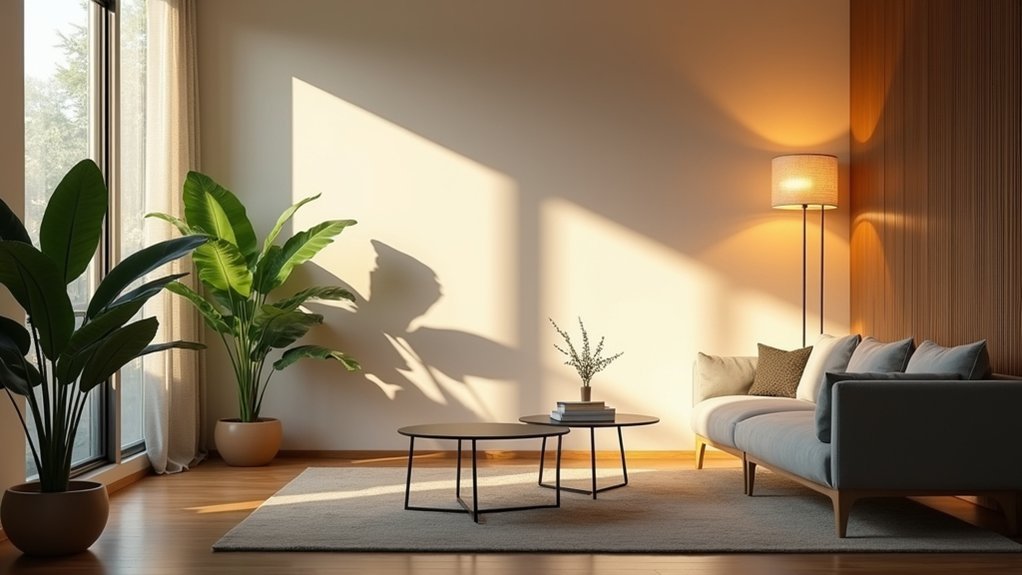
While traditional lighting systems waste energy when left on unnecessarily, smart home lighting dramatically reduces consumption through intelligent automation.
You’ll cut your home lighting energy use by 7-27% depending on how you configure your system.
Smart lighting’s IoT technology enables real-time adjustments based on occupancy, daylight levels, and your preferences.
Smart lighting adapts instantly to your presence, natural light conditions, and customized settings through advanced IoT connectivity.
Sensors automatically dim or switch off lights in empty rooms, while scheduling features guarantee lights operate only during needed periods.
You can manage everything remotely via smartphone or voice commands, preventing lights from being left on accidentally.
LED bulbs used in smart lighting systems consume 75% less energy than traditional incandescent bulbs while providing the same illumination levels.
Enhanced Home Security With Simulated Occupancy
Your smart lighting schedule can create realistic presence patterns that make your home appear occupied even when you’re away.
By programming lights to turn on and off in different rooms throughout the evening, you’ll establish a convincing illusion that someone is home moving from space to space.
This intruder deterrent lighting considerably reduces your home’s appeal as a target, as burglars typically avoid properties showing signs of occupancy and active monitoring.
With the growth of safety and security features in smart homes by 151% from 2019-2023, homeowners are increasingly recognizing the protective benefits of automated lighting systems.
Realistic Presence Patterns
Creating realistic presence patterns stands as one of the most effective strategies for deterring potential intruders when you’re away from home.
Unlike simple timers that switch lights on and off at the same times daily, smart lighting schedules can replicate your actual living patterns using stochastic models that introduce natural variability.
To create truly convincing simulated occupancy:
- Implement randomized timing variations of 15-30 minutes for your lighting events to avoid predictable patterns that experienced burglars might recognize.
- Simulate multi-room occupancy by sequentially activating different zones (kitchen in evening, bedroom later) as you’d naturally move through your home.
- Incorporate data from your real routines by allowing your system to learn from your daily habits, creating a digital twin of your household’s unique patterns.
Intruder Deterrent Lighting
Intruder deterrent lighting builds upon realistic presence patterns by transforming your smart home system into an active security measure. Motion-activated lights instantly illuminate when detecting movement, startling potential intruders and signaling that your property is monitored.
The psychological impact is significant—unpredictable lighting patterns confuse burglars while sudden light activation creates the impression of an alert household. Most criminals specifically target homes that appear vacant, and your smart lighting removes this vulnerability. This security approach has gained significant traction with smart camera adoption increasing by 55% from 2021 to 2022.
For maximum effectiveness, integrate your lighting with motion sensors and security systems. Focus on eliminating dark corners and blind spots around entrances and pathways.
When combined with nighttime illumination strategies, you’ll create a thorough security approach that dramatically reduces break-in risk while providing peace of mind whether you’re home or away.
Morning to Night: Customizing Light for Daily Routines
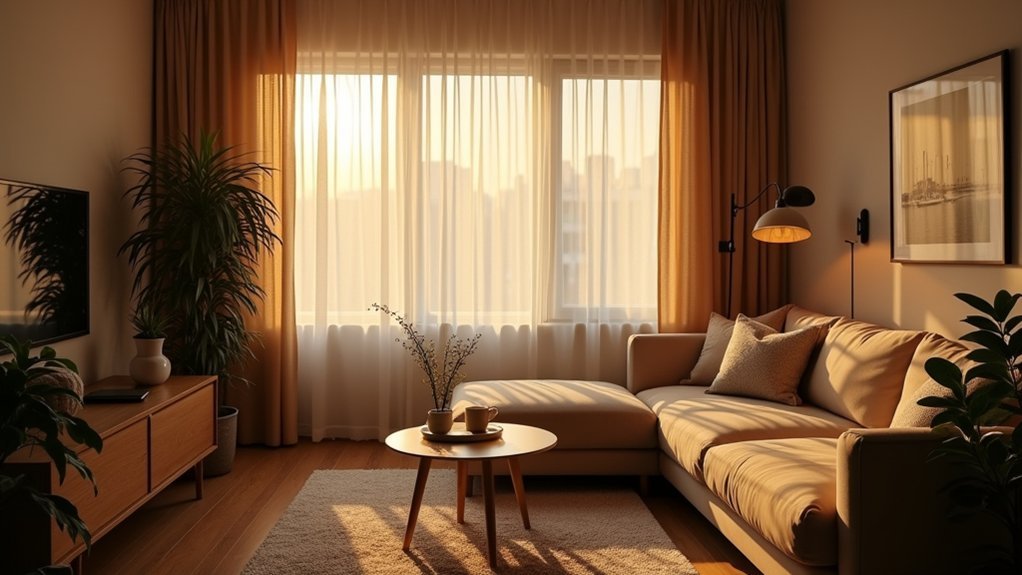
As the sun travels across the sky, our bodies naturally respond to changing light conditions, making smart home lighting schedules a powerful tool for enhancing your daily routines.
Light shapes our natural rhythms, making intelligent home illumination an essential ally for optimized daily living.
You’ll experience improved alertness, mood, and sleep quality when your lighting harmonizes with your circadian rhythms.
Program your smart lighting to:
- Simulate sunrise with gradually brightening warm light to wake you gently without harsh alarms
- Switch to cooler, energizing light during work hours to boost productivity and focus
- Shift to dimmer, warmer tones in the evening that support melatonin production and prepare your body for restful sleep
These automated changes eliminate manual adjustments and can accommodate different household members’ schedules, making your home more responsive to everyone’s needs while saving energy. The integration with voice assistants allows for hands-free control of your lighting schedules when spontaneous adjustments are needed.
Remote Control Capabilities for Busy Households
While automated lighting schedules enhance your daily routines, remote control capabilities take smart home lighting to the next level for busy households.
You’ll enjoy adjusting your home’s lighting from anywhere using your smartphone or tablet, eliminating the need to physically access switches.
When you’re running late or plans change unexpectedly, you can override scheduled settings on the go. Left lights on while rushing out? Simply turn them off remotely to save energy and reduce costs. This feature aligns with the growing focus on energy efficiency in smart home adoption, especially in European markets.
For enhanced security, you can activate lights to simulate occupancy when you’re away, deterring potential intruders.
Your entire household benefits as multiple users can independently control lighting to suit their preferences.
These systems seamlessly integrate with voice assistants and other smart home devices, creating a thorough ecosystem that adapts to your dynamic lifestyle.
Seasonal Lighting Adjustments Made Simple

Seasonal changes in daylight hours no longer need to disrupt your home’s lighting patterns when you implement smart scheduling.
Your system automatically adjusts to sunrise and sunset times throughout the year, maintaining perfect lighting without any manual intervention. This seasonal adaptation supports your circadian rhythm with color temperature changes that mimic natural daylight patterns. Smart lighting systems can reduce energy use by up to 63% in urban areas when properly scheduled for seasonal variations.
- Morning brightness – Cool, blue-enriched light activates your home as winter mornings stay darker longer, helping you maintain alertness despite seasonal changes.
- Evening shifts – Warm amber tones automatically activate earlier during fall and winter evenings, signaling your body it’s time to wind down.
- Security enhancement – Outdoor lights adjust to longer nights, creating varied patterns that deter potential intruders during darker seasons.
Smart Integration With Other Home Systems
Integrating your smart lighting with security systems creates a powerful deterrent against intruders while providing peace of mind through automated responses to potential threats.
You’ll maximize energy savings when your lighting system communicates with other smart devices, automatically adjusting based on occupancy, time of day, and environmental conditions.
Voice commands through Alexa, Google Assistant, or Siri let you control your entire lighting ecosystem effortlessly, from turning on a single lamp to activating complex multi-device scenes throughout your home.
With over 69 million US households now using smart home devices in 2024, integrating your lighting system has become increasingly accessible and user-friendly.
Seamless Security Enhancement
Beyond convenience and energy savings, a smart home lighting schedule serves as a powerful security enhancement when integrated with other home systems.
You’ll create a thorough security solution that deters intruders and protects your family through intelligent automation. The gradual development of this technology aligns with the smart home market trend of focusing on incremental changes that enhance quality of life rather than revolutionary shifts.
- Set up occupancy mimicking patterns that automatically turn lights on and off throughout your home, making it appear occupied even when you’re away for extended periods.
- Integrate motion-activated lighting with security cameras to illuminate potential threat areas, capturing clearer footage while alerting you to unexpected movement.
- Connect your lighting system with smart locks and alarms to create coordinated responses—lights can flash during emergencies, illuminate entryways when access is granted, or highlight escape routes when smoke detectors activate.
Whole-Home Energy Management
When you connect your smart lighting schedule with other home systems, you’ll transform simple automation into thorough energy management. Your lights, HVAC, and appliances work together, creating savings of up to 16% through optimized scheduling and real-time grid integration. Full optimization with Home Energy Management Systems can reduce monthly energy bills by up to 30%.
| Integration Type | Benefit | Savings Potential |
|---|---|---|
| HVAC + Lighting | Synchronized comfort | 8-12% energy reduction |
| Renewable Energy | Self-consumption optimization | 10-20% better solar utilization |
| Smart Grid | Demand response capability | 5-15% lower utility costs |
Your system’s automated reporting provides actionable insights into energy patterns, while integration with renewable sources guarantees lights run on solar power when available. You’ll also qualify for regulatory incentives and rebates when you implement thorough energy management, making smart lighting schedules financially rewarding beyond basic convenience.
Voice Control Ecosystem
Your smart home’s voice control ecosystem elevates lighting schedules from simple automation to intuitive experiences. With 72% of smart speaker owners using them daily, voice assistants seamlessly integrate into your routines, allowing you to adjust lighting without lifting a finger.
Voice control transforms your lighting schedule by:
- Enabling natural language commands to modify lighting scenes on the fly (“Dim the kitchen lights to 30% for dinner”)
- Learning your preferences over time to automatically adjust lighting based on your habits and routines
- Providing accessibility benefits for everyone in your household, especially those with mobility limitations
The technology behind this convenience is impressive—advanced NLP and AI continuously improve accuracy and responsiveness. This integration is especially valuable considering that 79% of consumers report smart home devices have positively impacted their lives.
As part of the rapidly growing smart home market, voice control represents the natural evolution of how you’ll interact with your home’s lighting systems.
Reducing Your Carbon Footprint One Light at a Time
While most homeowners focus on major appliances for energy savings, smart lighting offers a surprisingly powerful way to reduce your carbon footprint.
A complete switch to LED technology could eliminate 800 million metric tons of CO₂ annually—equivalent to shutting down 684 coal plants.
But you can go further by adding smart controls that automatically dim or turn off lights when rooms are unoccupied.
Smart lighting schedules guarantee your lights operate only when needed, reducing unnecessary consumption and lowering your household emissions.
Automate your illumination to ensure every watt serves a purpose, not the empty rooms of your home.
By implementing automation that adjusts for daylight conditions, you’ll contribute to the projected 5.2 gigaton CO₂ reduction potential by 2030.
Your small change adds up—smart home systems typically cut overall energy use by 10-15%, making your lighting choices a meaningful part of climate action.
Countries like France have demonstrated that simply turning off non-residential lighting at night can save energy equivalent to the consumption of 750,000 households.
Creating the Perfect Ambiance for Every Occasion
As natural light shifts throughout the day, your home lighting should adapt to complement your activities and enhance your wellbeing.
Smart lighting schedules transform your space effortlessly, mimicking natural daylight patterns while supporting your body’s circadian rhythm. You’ll experience improved sleep quality, reduced eye strain, and spaces that evolve seamlessly from energizing to relaxing. Market data indicates household penetration of smart lighting will more than double from 14.9% to 34.1% between 2025 and 2029.
- Morning brightness – Cool-toned, bright lights awaken your senses as sunshine streams through windows, illuminating your kitchen countertops and creating an energetic atmosphere for productivity.
- Evening warmth – Amber hues automatically fade in as sunset approaches, casting a soft glow across your living room that signals your body to wind down.
- Dinner ambiance – Focused lighting highlights your dining table while subtly dimming surrounding areas, creating an intimate setting for meaningful conversations.
Frequently Asked Questions
Do Smart Lighting Systems Work During Internet Outages?
Yes, your smart lighting systems can work during internet outages if they use local control options. You’ll still have basic on/off functionality through physical switches or smart hubs connected to local networks like Zigbee or Z-Wave.
How Difficult Is Installation for Non-Technical Homeowners?
Installation varies for non-technical homeowners. You’ll face moderate learning curves with basic systems, but may struggle with complex wiring in older homes. Manufacturer support tools and online tutorials can help you overcome most challenges.
Are Smart Bulbs Compatible With Existing Light Fixtures?
Yes, you’ll find smart bulbs are compatible with most existing light fixtures. They typically use standard bases like E26/E27 and fit into common sockets without requiring any rewiring or special adapters.
What’s the Typical Lifespan of Smart Lighting Components?
You’ll typically get 15,000-25,000 hours from smart LED bulbs, outlasting traditional incandescents (1,000 hours) and CFLs (7,000-10,000 hours). High-quality components, proper ventilation, and moderate brightness settings will maximize their lifespan.
Can Smart Lighting Systems Be Hacked?
Yes, your smart lighting systems can be hacked. Vulnerabilities in ZigBee protocols and firmware can allow attackers to compromise bulbs, potentially accessing your entire home network. Using separate networks and keeping firmware updated helps reduce these risks.
In Summary
You’ve seen how a smart lighting schedule transforms your home—saving energy, boosting security, and adapting to your lifestyle. By automating your lights, you’re not just creating convenience; you’re building a more efficient, secure, and comfortable living space. Whether you’re home or away, your lighting works for you. Take the step toward smarter living and watch your home light up with possibilities.

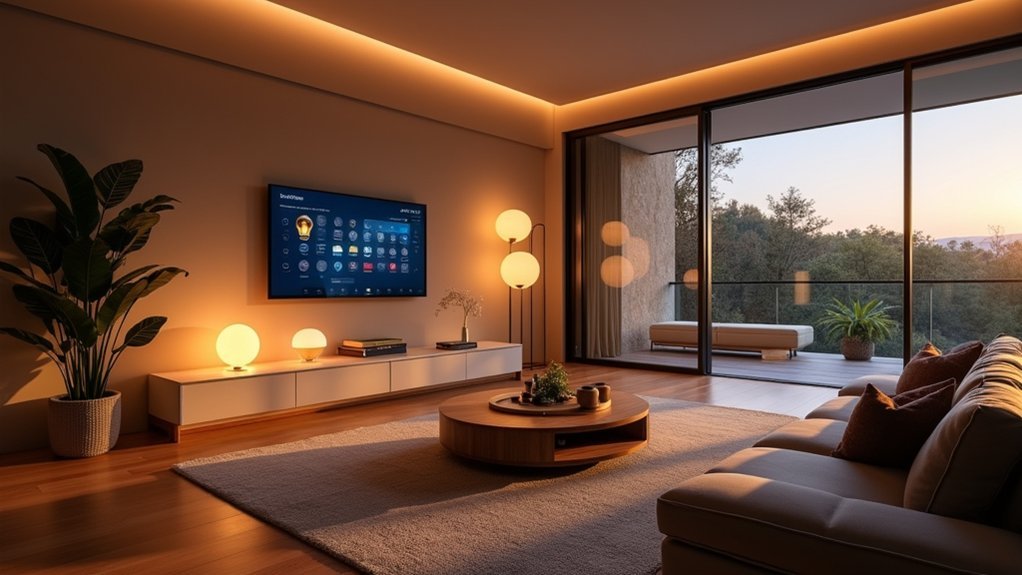
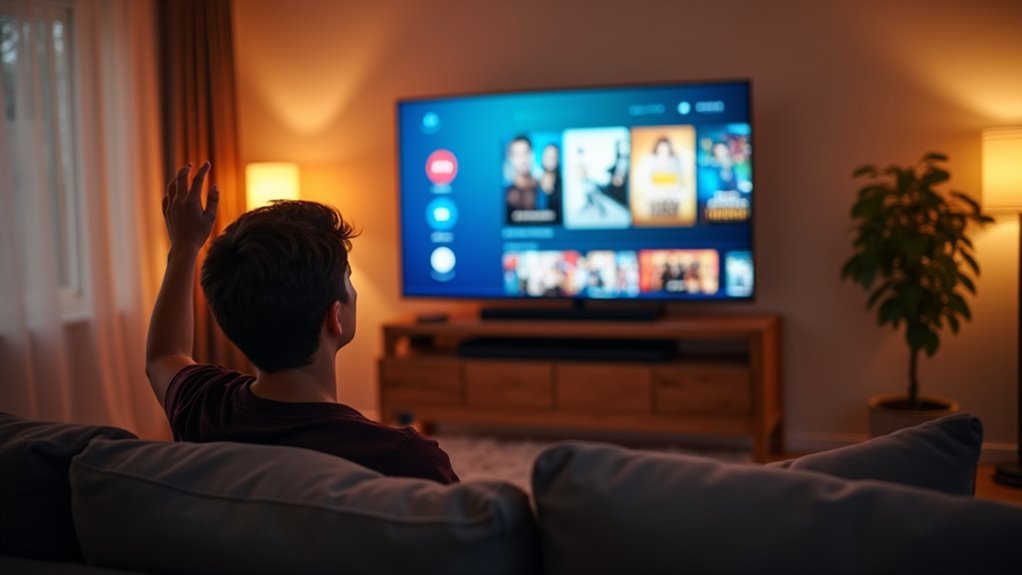
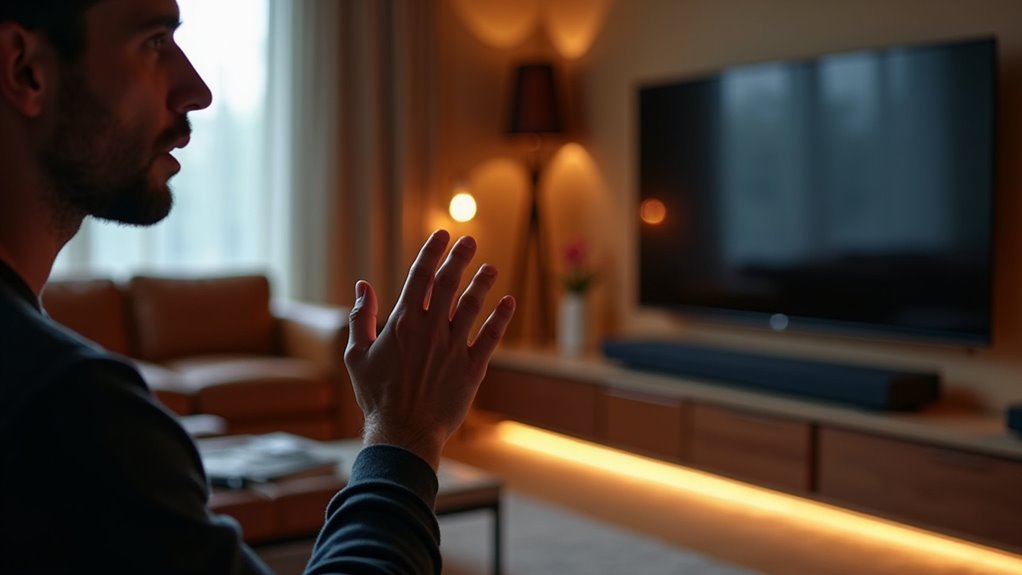
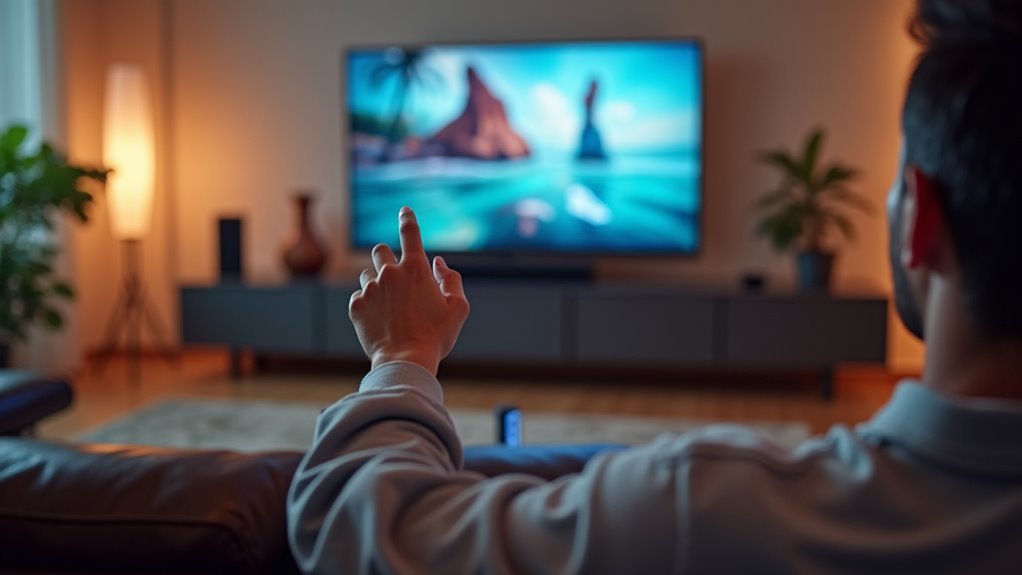
Leave a Reply